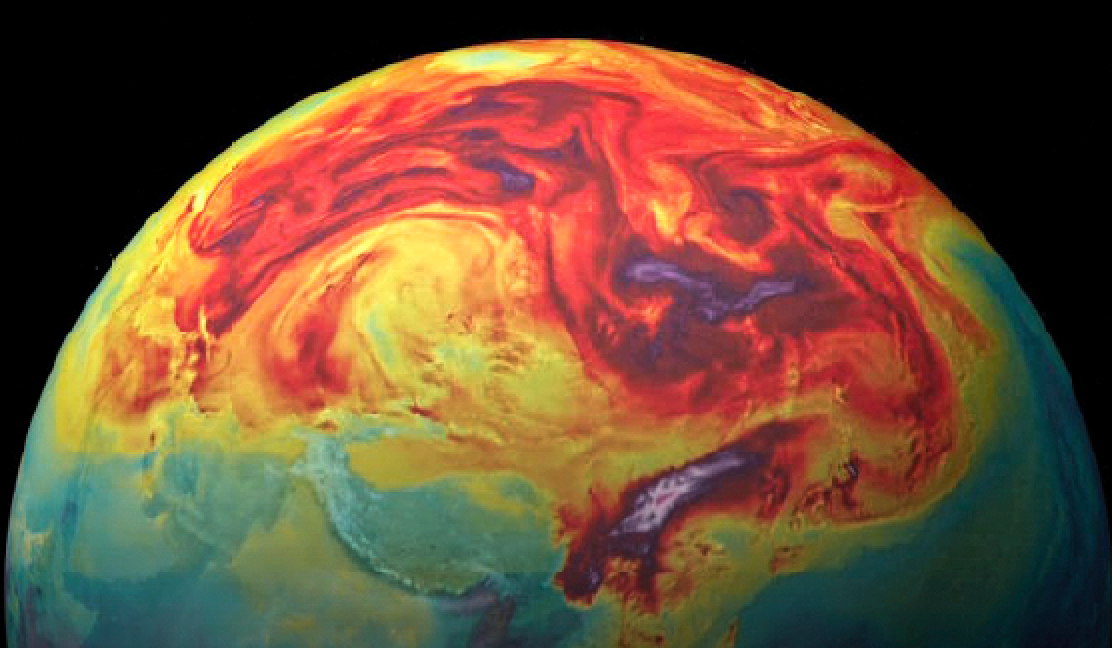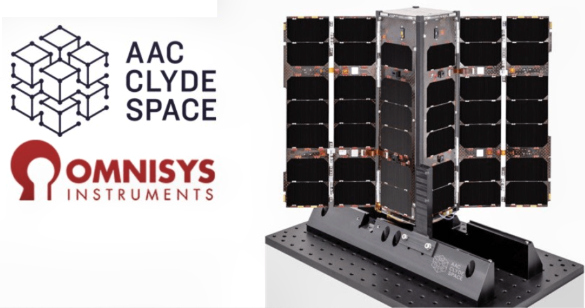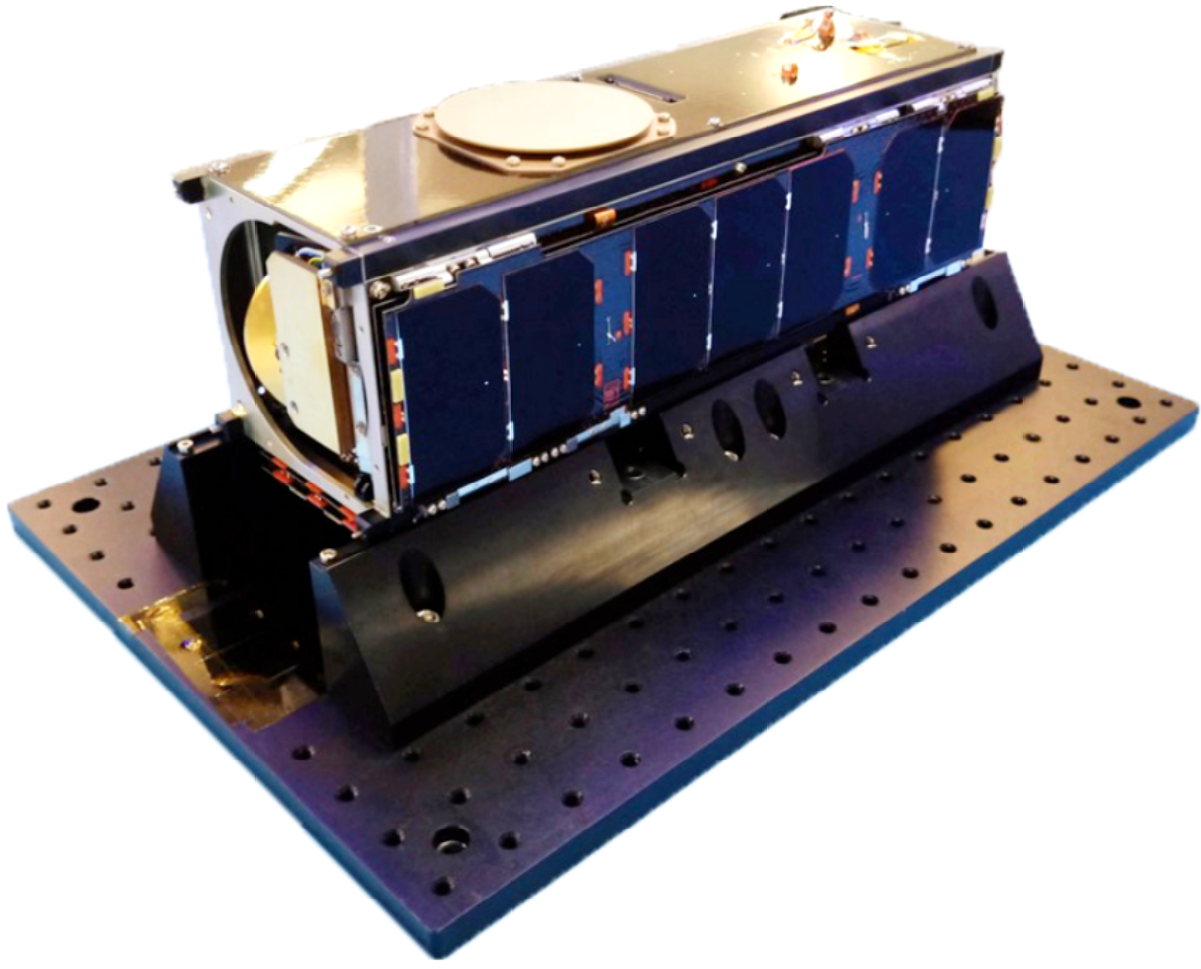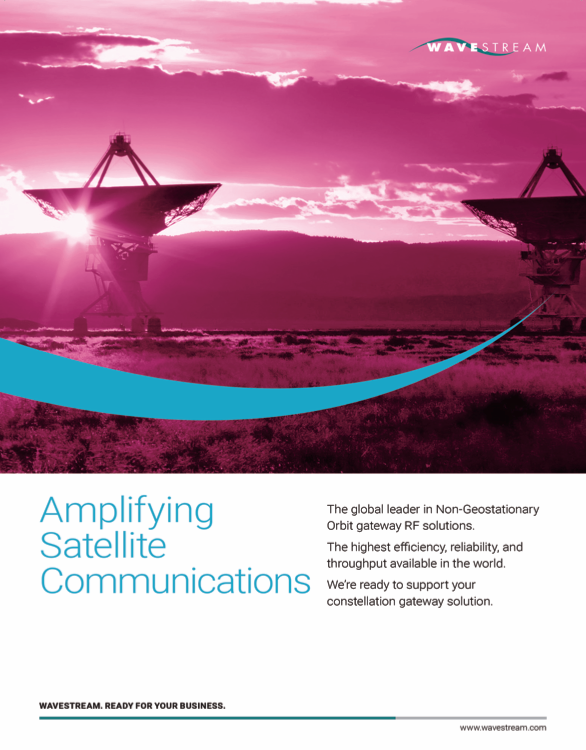The eyes of the world were fixed on Glasgow in November of last year, as world leaders gathered at COP26 to address one of the most important and urgent issues of our time: climate change. Small satellites (smallsats) are an integral part of the climate change mission. As the adage goes, ‘what gets measured gets managed.’

Now, thanks to innovation — such as advanced sensors, miniaturization of components, high-speed data transfer and better storage capability — we can use smallsats to measure key planetary indicators accurately, on a global scale, in close to real time. Think greenhouse gas emissions, sea levels, the size of the polar ice caps, forest cover, and much more.
AAC Clyde Space’s role is to help to capture and deliver this high-quality, timely data to those who need it. In doing, so we can fill the gaps in our understanding of climate change and equip scientists, policymakers and businesses to develop more effective strategies against it.
We are developing a number of initiatives, from spacecraft that pack more capability and processing power into smaller cubes, to applications that monitor Earth and enable better decision-making to innovations that tackle the growing issue of space debris.
Ultimately, the commercial smallsat industry is uniquely positioned to support our global sustainability and climate change goals by providing access to increasingly sophisticated and timely earth observation data and space-based services. If analyzed and acted upon quickly by businesses and governments, this can make a meaningful difference.
Here are just some of the ways in which AAC is having a direct impact:
WEATHER FORECASTING
AAC Omnisys’ advanced sensors are raising the quality of weather data, enabling significant improvements in weather forecasting and climate research. This has important implications for minimizing the damage and disruption caused by extreme weather, which is occurring with frequency across the planet. All too often, the response to extreme weather is reactionary because businesses and governments lack the information needed to prepare. The result is unnecessary lives lost and economic setbacks. In fact, the United Nations estimates the direct economic losses from weather disasters between 1998 and 2017 at almost $3 trillion.
AAC Omnisys’ latest type of microwave-based sensor could help to lower this figure. This sensor has already been selected by the European Space Agency (ESA) for the Arctic Weather Satellite constellation, designed to improve forecasting over the Arctic as well as across the globe.
GEMS
ENABLING BETTER RESPONSES TO EXTREME WEATHER We’ve been working with Orbital Micro Systems to deliver cubesats for that firm’s Global Environmental Monitoring System (GEMS). GEMS uses microwave sounders to record temperature, humidity and precipitation at multiple altitudes, regardless of cloud cover.
This information can be used to improve storm forecasts and, in turn, enable faster, informed decision-making by businesses and governments in the face of weather- driven emergencies. At full deployment, GEMS will deliver near real- time data for any point on Earth.

“Through GEMS, we further extend our involvement in space missions aimed at enhancing the understanding of our environment. Missions of this kind help us all in the quest for a safer and more sustainable life on Earth,,” said Luis Gomes, CEO, AAC Clyde Space.
MARITIME SURVEILLANCE & COMMUNICATIONS
The oceans cover three quarters of the Earth’s surface and represent 99 percent of the living space on the planet by volume. Their temperature, chemistry, currents and life drive global systems that make the Earth habitable for humankind.
However, they are also subject to neglect and pollution which is disrupting ecosystems and biodiversity. If left unchecked, this could be devastating for the future of the planet. Our technology supports better ocean management, from enabling faster reactions to oil spills to detecting harmful microplastics, tracking illegal fishing and reducing fuel usage and emissions.
SEAHAWK: MONITORING OCEAN HEALTH
A key indicator of ocean health is to observe the changing biology of the ocean surface. This can be done using satellites to perform ocean color monitoring: changes in ocean color reflect changes in marine phytoplankton and other types of particulate matter, revealing valuable insights into ecosystem processes and overall health.

Ocean color monitoring is an Essential Climate Variable but also a prohibitively expensive activity. That is, until 2019, when we designed, produced, and launched the SeaHawk platform. Seahawk is a collaboration with the University of North Carolina Wilmington and NASA’s Goddard Space Flight Center. This is a follow-on mission from the highly successful SeaWiFS (Sea-Viewing Wide field-of-View Sensor) mission, launched in 1997.
Seahawk can replicate the performance of the SeaWiFS mission but is approximately 100 times smaller, lighter and less expensive.
The spacecraft carries a cutting-edge multispectral imager, designed by Cloudland Instruments, called ‘HawkEye,’ to perform ocean color monitoring. These images are available free of charge via NASA’s Ocean Color website.
The data is integrated into NASA’s SeaWiFS Data Analysis System and distributed worldwide. It supports greater understanding of the marine food chain, oceanic climate, fisheries and pollution phenomena, which is vital to supporting healthier, more sustainable oceans.

IOD-1 GEMS 3U demonstration satellite deployed
3 July 2019
VDES: CREATING SAFER, CLEANER OCEANS
Around 90% of all traded goods are carried by ships, with maritime trade volumes set to triple by 2050. This huge increase in ocean traffic is prompting growing concern about the detrimental effects to the health of our oceans, the safety of seafarers, and congestion. Satellite-based services can support greater safety and efficiency. For example, the company has just signed an MoU (Memorandum of Understanding) with Saab and ORBCOMM to create the world’s first, dedicated, global maritime communication system.
Using VHF Data Exchange System (VDES) with added space-based capability, enabled, for the first time, is ship- to-ship and ship-to-shore communication anywhere in the world, with as much as 32 times more bandwidth than the currently widely used Automatic Identification System (AIS) communication technology.
VDES will contribute to a greener shipping industry. For example, it can be integrated with e-navigation systems to enable savings in fuel and emissions of up to 25 percent.

Furthermore, improved coordination between ships should result in fewer accidents and safer oceans for seafarers. Where accidents do occur, VDES will enable far quicker response times.
The system is especially impactful when combined with other technology for the detection of piracy, illegal fishing and smuggling as it can’t be turned off manually like an AIS.
AMBER: COMBATING ILLEGAL OCEAN ACTIVITY
Using satellites to create improved detection and reduce illegal activity can not only reduce threats to the maritime industry but ensure seafarers are kept as safe as possible while out at sea. AAC is manufacturing, delivering to orbit and operating a fully integrated cubesat — IOD-3 AMBER — for the company’s partners at Horizon Technologies for use in that firm’s AMBER SIGINT (Signals intelligence) program. The satellite will be used to provide commercial customers worldwide with end-to-end data services to help track and combat illegal maritime activity.

Two additional AAC Clyde Space satellites will comprise part of the Horizon Space Technologies’ Amber™ constellation, dedicated to delivering Maritime Domain Awareness (MDA) intelligence data. The constellation will be used to locate and track vessels worldwide by geolocating and demodulating RF signals in a system that can be used for illegal activity such as piracy, illegal trans-shipments and other detective purposes.
SPACE DEBRIS
The global space economy is projected to reach $1 trillion by 2030 by some estimates. This will be driven by the launches of many new satellites over the next decade.
However, this growth is threatened by the increase of human-made space debris, which is approaching a critical level. According to a statement released at this year’s World Economic Forum, close to one million objects larger than 1 cm. travel at 27,000 km. per hour in Earth orbit — each one a threat to satellites and other spacecraft performing valuable services to our global economy, from earth observation to navigation, communication and research.
We agree that, as an industry, we need to do a better job at safeguarding the Earth orbits and ensure they are used in a sustainable and safe manner now and for future generations. Part of this is about developing technology that will make the next generation of satellites more sustainable.

AAC is currently working on propulsion technology to help avoid collisions in space and to accelerate the spacecraft’s re- entry, minimizing time spent in space after end of life. In fact, our cubesat propulsion module, developed with Dawn Aerospace, was the first ECSS10 compliant, 3D bi-propellant propulsion system permitted for launch into space.
The company is also proud to partner with clients such as Astroscale, who are working to clean up space by developing technologies for the disposal of spacecraft at end-of-life, and Space Forge, who are exploring the possibilities of reusable spacecraft.
ASTROSCALE: CLEANING UP SPACE
We have been selected by Astroscale to co-engineer its satellite platform for its spacecraft decommissioning service, ELSA (End of Life Services by Astroscale), which is moving into a commercial phase this year.
The servicer itself, ELSA-M, is designed for constellation satellites and will remove multiple retired satellites from Lower Earth Orbit (LEO) in a single mission.

“Traffic in Low Earth Orbit is expected to increase exponentially over the coming decade. For the space economy to progress effectively, and safely, the industry needs to adopt new practices to minimize space debris. We are happy to help to create pioneering solutions that support Astroscale’s efforts to actively remove debris from the smallsat space highways,” said Luis Gomes, CEO, AAC Clyde Space.
www.aac-clyde.space


